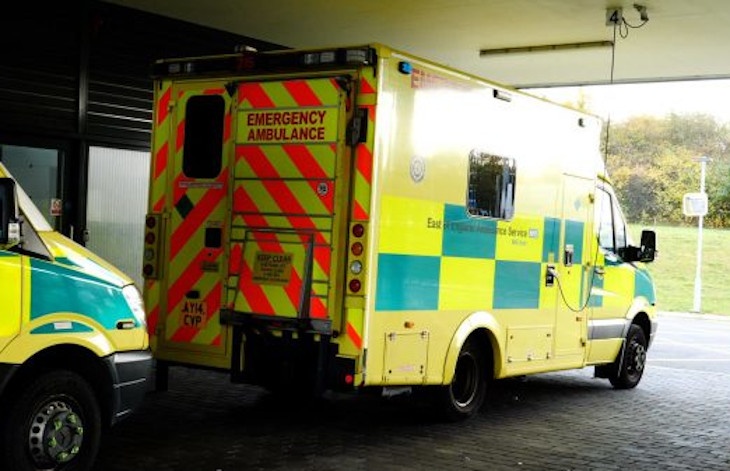
Access to care in the UK: How is the NHS system organised in the UK?
The NHS in the UK is a health care system funded from general taxation and free at the point of use. NHS was founded on the principle of providing equal opportunity of access for those at equal risk.
The health care needs of populations vary across the country; to provide equal access these areas should receive different allocations from the total NHS budget.
But it is evident that in different areas, the costs of providing care vary because of unavoidable and uncontrollable situations.
To what extent do health outcomes and healthcare provision vary in these areas needs to be analysed.
The population of UK is just under 67 million.
The population density varies ranging a 100-fold from 5,700 people per square kilometre in London, to a less than 50 people per square kilometre in most of the rural areas.
Rural UK areas are very diverse, with varied demographics, the scattered small towns and villages to coastal communities that depend on fishing, tourism and mining. 17% of the population in England and Scotland live in rural areas.
For Wales and Northern Ireland 35% and 37% live in rural areas respectively.
Access to care in the UK: In the local NHS clinic primary care is provided by a General Practitioner (GP) or nurse
A range of public health services are offered which include vaccinations and check-ups.
Around 11% of the population prefer to see private healthcare providers, but all emergency care is provided by the NHS.
In terms of access to primary care, 94% of people living in urban areas of England live within a 20-minute walk of a GP premises.
But only 19% of those in rural areas have this kind of accessibility, for them the community pharmacies are more accessible.
The pharmacies deliver a wide range of healthcare services to their nearby populations.
The Royal College of General Practitioners which is a professional body for GPs in the UK, explains that there are specific challenges facing general practice and their patients rural areas.
- Longer distances to GPs, dentists, hospitals and other health facilities mean that rural residents would use the services less with increasing distance.
- The response times of health care staff are longer and so care gets delayed.
- Nursing staff working in rural settings have reported challenges in technology access like broadband, resulting in delayed care.
- Rural hospitals are often small due to their remoteness, so they can have high cost pressures, as well as longer waiting times and more delayed transfers of care. Apart from financial pressures there are difficulties in staff recruitment and retention.
Several technological initiatives have now been employed to support healthcare delivery for people in rural settings.
Telemedicine is a convenient, accessible and cost-effective method of providing care for patients with long term conditions.
In 2019 NHS introduced a plan which aims for digitally enabling primary and outpatient care and make it mainstream in the following years to come.
Digital appointments and prescriptions have been already introduced.
The NHS App would provide advice, check symptoms and connect people with healthcare professionals through telephone and video consultations.
The nhs.uk platform is regularly updated so that everyone can find helpful advice and information regarding their conditions.
According to Local Government Association’s report, the health of people in rural areas is better than that of urban areas with higher life expectancy and infant mortality.
Lesser number of potential years of life lost from cancers, coronary health disease and stroke.
Overall, around one sixth of areas with poor health and deprivation are in rural areas. Number of NHS staff per head are fewer in rural areas than in urban areas.
The population is older than average in rural areas, which leads to higher demand for health care services.
Sometimes There are inevitable trade-offs between the desire to offer equal access to services to everyone, and the financial costs of doing so where economies of scale cannot be achieved.
However, with the help of NHS funding although the hospitals may be in a financial deficit, they do not close altogether.
Despite all the challenges in providing care in remote areas, studies have found higher well-being scores among people in rural areas.
 So, although there are several challenges, they do not lead to worse outcomes.
So, although there are several challenges, they do not lead to worse outcomes.
These can mostly be overcome with good planning and innovation.
With some observations about the consistency, transparency and adequacy of current approaches to compensate health services in rural areas steps should be taken in a direction where – Equality of opportunity of access of care for those in equal need is met.
Article for Emergency Live by Irawati Elkunchwar
rural-health-care-report-web3Read Also:
Stretchers In The UK: Which Are The Most Used?
EMTs In The UK: What Does Their Work Consist Of?
Rescue And Patient Care Techniques During Covid-19 In UK
Source:
https://www.healthwatch.co.uk/
The UK National Health Service: A Rural Versus Urban Perspective (sma.org)


